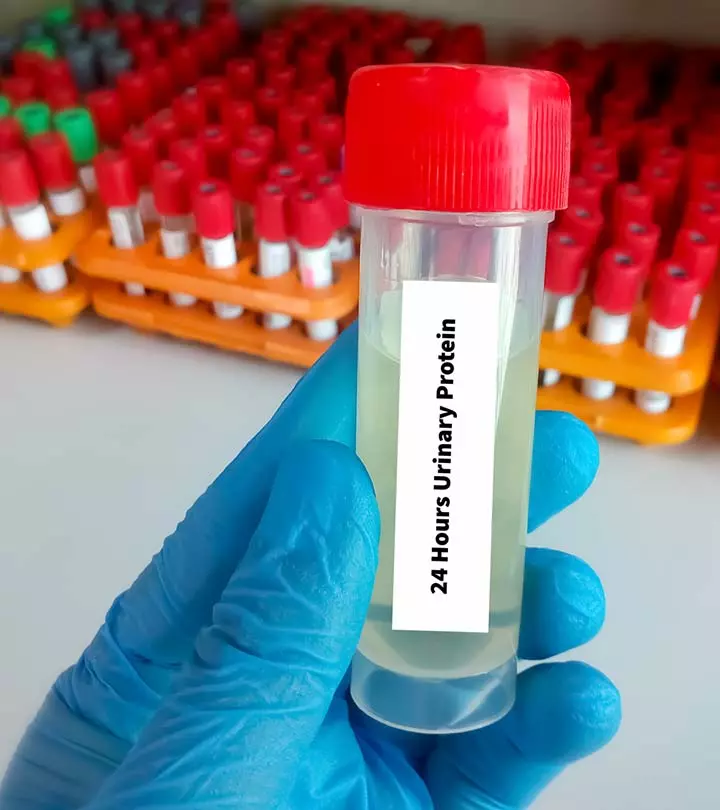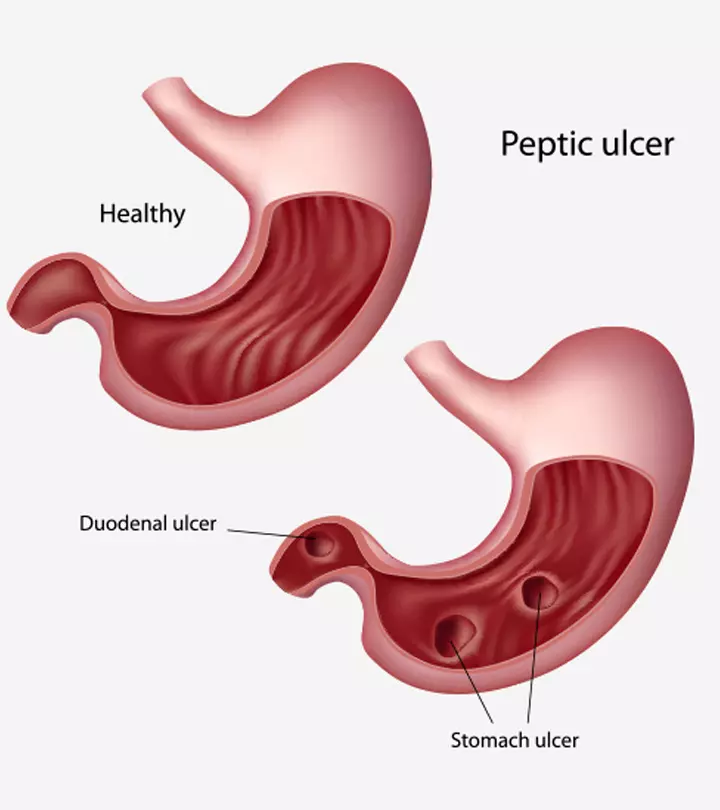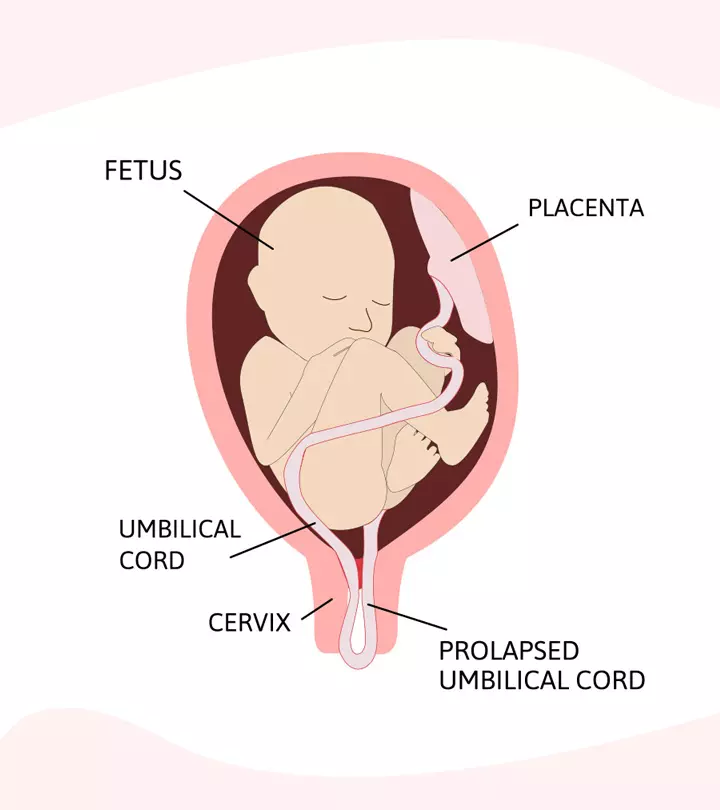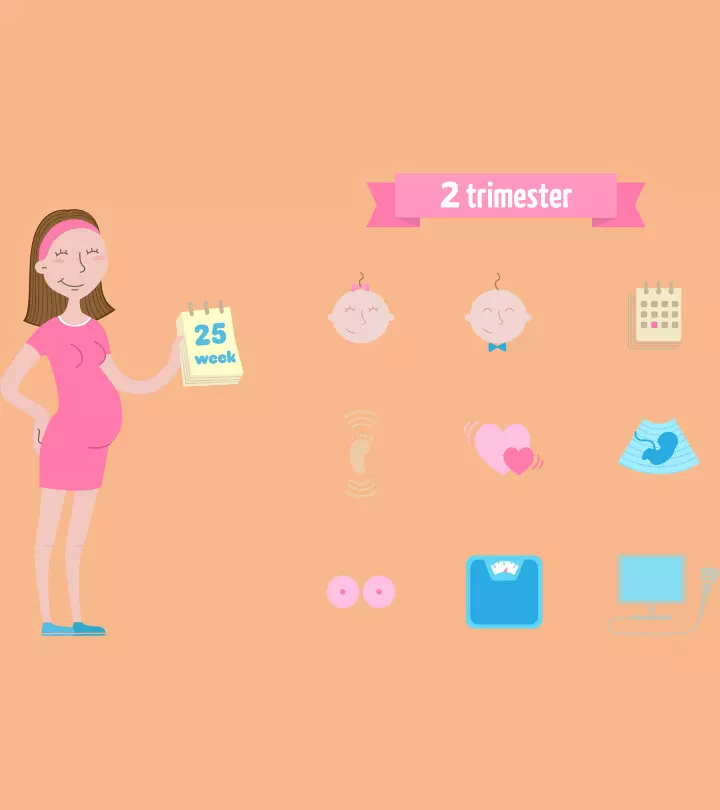
Image: iStock
A sitz bath is a traditional, therapeutic warm bath used for gentle cleaning of one’s genitals or pelvic area. Unfortunately, many mothers may be unaware of how to take a sitz bath during pregnancy. After a vaginal delivery, women may experience soreness and pain in the perineum due to the trauma resulting from the birthing process or from the vaginal stitches. That is when a sitz bath is given to new mothers to relieve them from the post-delivery pain. Keep reading this post to know the benefits of a sitz bath and precautions to be taken during the bath.
Key Pointers
- Cleansing the genital area can be achieved through a sitz bath, which is a shallow bath that covers the hips and perineum.
- Sitz baths are especially useful for women after giving birth as they help soothe discomfort and promote healing in the perineal area.
- Sitz baths can reduce pain and discomfort caused by conditions such as hemorrhoids, constipation, and other lower pelvic problems.
- To take a sitz bath, use lukewarm water, cleanse feet before use, wait 24 hours after a natural delivery, and clean the tub thoroughly.
- If you plan to add any herbs or other ingredients to the water, it is essential to consult a doctor beforehand.
What Is A Sitz Bath?
It is a therapeutic, warm water bath generally used for healing or cleaning of the genitals or the pelvic area. It cleanses the perineum, which is the region between the rectum and the vulva (females) or scrotum (males). The word ‘sitz’ originates from the German word ‘sitzen’, which means sit (1). Most hospitals and maternity units encourage sitz baths a few times a day as these are usually just warm water and salt.
When Is Sitz Bath Used?

Image: Shutterstock
Sitz bath can be used for the following reasons.
- Personal hygiene
- Post delivery (in case of a vaginal one and not a cesarean section)
- Genital infections
- Hemorrhoid painiA condition in which the rectal and anal region veins get swollen
- Any surgery in the perineal area, such as an episiotomy
- Itching or irritation in the perineum
- Constipation
Hemorrhoid pain after childbirth is a common and uncomfortable issue that many new mothers may face. It is often caused due to increased pressure on the pelvic blood vessels, hormonal changes, and constipation (2). Jaishrie, a mother and a teacher, shares her experience of how she managed to deal with hemorrhoids after her delivery. She says, “My homeopathy doctor advised me to apply one ointment called Aesculus gel besides the food restrictions. It proved beneficial to me. Another thing that one needs to do apart from the medicines and the gel (ointment) application is a Sitz bath.”
She goes on to say, “Sit in the sitz bathtub containing potassium permanganate after passing stools. KMnO4 acts as a disinfectant and helps in the recovery process (i).”
 Things to know
Things to knowWhat Are The Benefits Of A Sitz Bath?

Image: Shutterstock
Sitz baths have been in use for a long time, owing to their healing properties. Pregnant women can try the sitz bath at home during and post pregnancy to enjoy its benefits.
- Warm water helps increase the blood flow to the genital area. It promotes healing of any inflammation or swelling in the specific area.
- Its soothing properties help relieve itching and promote pain relief.
- Helps in relieving the discomfort of postpartum hemorrhoids.
- It helps to dissolve the stitches of the perineum after natural childbirth.
- Hastens the healing process of the perineum post childbirth.
- It is useful for cleansing the perineum to prevent any infection.
- Helps relieve the discomfort of constipation.
- Promotes relaxation of the sore muscles in the pelvic region.
The benefits of adding Epsom salt to sitz bath include:
- Its anti-inflammatory properties help in reducing the swelling.
- It contains magnesium that prevents cramping. Magnesium also releases serotoniniA natural mood stabilizer and a chemical that conveys messages throughout the body that helps you relax by minimizing the effects of the stress hormones.
Soothes the itchy skin.
How To Take A Sitz Bath In The Bath Tub?
Here the steps to follow for a sitz bath in the bathtub:
- Use a scrub to clean the tub with water and bleach, and rinse it thoroughly.
- Fill about two to three inches of the tub with warm water. Test the temperature of the water by placing a drop on your wrist before you sit in the tub. It should be tolerable, i.e., 37° to 39° C, or 99° to 102° F (3).
- The water must be enough to soak your perineum when you sit in the bathtub. As you sit, bend your knees and keep your legs on the sides of the tub.
- Add ½ cup (125ml) of baking soda or ¼ cup (75ml) of salt to the water and swirl properly to dissolve them. Otherwise, add herbs or medicines as prescribed by the doctor.
- Sit for 15-20 minutes and get out of the tub.
- Use a clean towel to pat dry your bottom. Do not rub the perineum as it can cause irritation and pain.
- After the bath, clean the tub thoroughly.
- If the baths are not possible due to cultural, religious or practical reasons (due to water restriction), you may make the above mixture in a jug and pour it over the area often, patting dry with a clean towel.
Before you take a sitz bath during pregnancy, consult with your OB-GYN and confirm if taking a sitz bath is appropriate for your specific condition.
How To Take A Sitz Bath Using A Kit?
A sitz bath kit comes with a basin that easily fits over the toilet seat. Fill it with warm water and add a medicine or solution as prescribed by the doctor. Using a sitz bath kit is easier than using a bathtub during the postpartum period.
- Place the basin carefully on the toilet seat, such that it stays in place firmly.
- Use the manual that you get with the kit and follow the instructions.
- Add warm water to the tub. The kit comes with a plastic bag into which you can add warm water. This water can be used to fill the basin when the existing water cools down. A vent in the sitz bath prevents the water from overflowing.
- Fill enough water to cover your perineum.
- Add ½ to 1 tablespoon (5 to 15mL) of baking soda or 1 to 2 teaspoons (5 to 10mL) of salt to water and swirl properly to dissolve it.
- Sit for 15-20 minutes and get up carefully after you finish.
- Use a clean towel to pat dry your bottom.
- After use, wash the basin with a disinfectant that comes with the kit.
Ingredients Necessary For A Sitz Bath

Image: Shutterstock
Different ingredients can be added to a sitz bath. In most cases it is just salts (epsom and table salt). Some women may also add ingredients such as aloe vera, Himalayan salt, red raspberry leaf, coconut oil, etc. Consult your doctor or the herbalist before using an essential oil, to check if it’s safe for you.
Precautions To Take While Taking A Sitz Bath After Delivery

Image: Shutterstock
Here are some precautions that you must take before taking a sitz bath post delivery.
- Avoid adding shower gels or soaps to the water, especially if they are scented.
- Water should not be too hot. Lukewarm water is ideal. Test the water temperature before getting into the tub.
- Thoroughly cleanse your foot before you get into the tub.
- If you had a natural delivery, then wait for at least 24 hours before trying the sitz bath. You can take two to three sitz baths every day or as advised by your doctor (1).
- Ensure that the tub is thoroughly cleaned to reduce any chances of infection, in the case of surgical wounds in the perineum.
- Ask your doctor about the dosage of medicines or herbs that you may use for the sitz bath.
- If there is any persistent pain or irritation in the perineum after using the sitz bath, then consult the doctor.
- Clean the sitz bath basin or bathtub thoroughly before and after the use.
 Quick tip
Quick tipPostpartum Herbal Sitz Bath Recipe
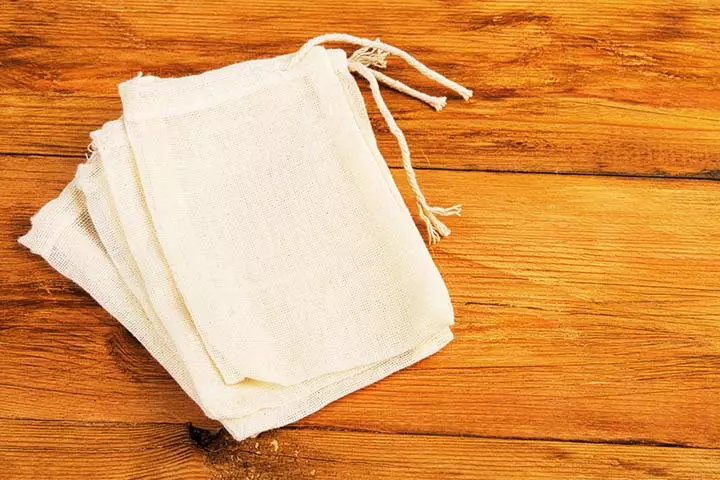
Image: IStock
Here is a sitz bath herbal recipe that you can try:
What you need – Cotton muslin bags
Ingredients:
- Unrefined sea salt – 9oz or 1 cup
- Plantain leaf – 2oz
- Lavender blossoms – 2oz
- Witch hazel – 2oz
- Yarrow – 2oz
- Chamomile – 2oz
- Calendula – 2oz
How to prepare:
- Mix all the ingredients.
- Fill the muslin bags with the mixture.
- Fill the tub with hot water.
- Put one muslin bag into the tub and allow the contents to dissolve.
- When the temperature of the water comes down to a tolerable level, enjoy the relaxing bath.
Note:
If you have stitches, then limit to one sitz bath a day. Otherwise, you can try it multiple times a day, depending on your comfort level.
Frequently Asked Questions
1. Is it safe to take an Epsom salt bath when pregnant?
Yes, it is safe to indulge in a warm Epsom salt bath during pregnancy. It can help relieve muscle tension and provide overall relaxation (4). It even improves skin smoothness and relieves morning sickness for some.
2. What can I use instead of a sitz bath?
Instead of a sitz bath, you can use a peri bottle to squirt water over the perineum to increase comfort and prevent infection (5). This method is convenient and also satisfying.
3. Can I get a UTI from a sitz bath?
Taking a sitz bath may irritate the skin, but it isn’t known to cause urinary tract infection (UTI). However, in rare instances, an individual may develop a UTI infection, especially if the sitz bath is not cleaned properly before use. An infection in the perineal region could also occur after recent perineal surgery (6).
4. What is the difference between a sitz bath and a regular bath?
A regular bath involves full-body immersion in water in a bathtub or shower. The bath is taken for relaxation and to maintain hygiene. In contrast, a sitz bath is a shallow bath that only covers the perianal region and lower body parts such as the hips, buttocks, and perineum. It’s typically done in a small bathtub or special sitz bath basin, and the water is usually medicated and warm. Its primary purpose is to clean and soothe the perianal area.
Sitz bath is a therapeutic, warm water bath you can try before and during pregnancy. Having a Sitz bath during pregnancy and after can relieve afterbirth pains and itching and promote relaxation of the pelvic muscles. You can enjoy a Sitz bath in shallow water in a bathtub or use a Sitz bath kit with a basin that easily fits onto the toilet seat. Avoid adding scented shower gels or soaps, and thoroughly clean the Sitz tub before and after a bath. You can talk to your doctor if you want a Sitz bath immediately after birth to cleanse the perineum and prevent infection.
Infographic: Precautions To Take While Taking A Sitz Bath After Delivery
A sitz bath is a soothing bath that facilitates wound healing and relaxation of muscles. So, if your doctor deems it safe and you wish to enjoy this therapeutic bath, check out this infographic for some necessary precautions. Read on and note them before taking a postpartum sitz bath. Illustration: Momjunction Design Team
A sitz bath is a great way to help with pain and discomfort. Learn from the video on how it can help you and how to use it correctly.
Personal Experience: Source
MomJunction articles include first-hand experiences to provide you with better insights through real-life narratives. Here are the sources of personal accounts referenced in this article.
i. Pregnancy and associated problems;https://jaishrie.blogspot.com/2010/07/pregnancy-and-associated-problems.html
References
- Taking a Sitz Bath; Saint Luke’s
https://www.saintlukeskc.org/health-library/taking-sitz-bath - Haemorrhoids During Pregnancy
https://www.pregnancybirthbaby.org.au/haemorrhoids-during-pregnancy - Having a Sitz Bath at Home; UHN (2016)
https://www.uhn.ca/PatientsFamilies/Health_Information/Health_Topics/Documents/Having_a_Sitz_Bath_at_Home.pdf - Treating Muscle Cramps During Pregnancy; American Pregnancy Association
https://americanpregnancy.org/healthy-pregnancy/pregnancy-health-wellness/treating-muscle-cramps-during-pregnancy/ - Pregnancy: Physical Changes After Delivery; Cleveland Clinic
https://my.clevelandclinic.org/health/articles/9682-pregnancy-physical-changes-after-delivery - Sitz Bath
https://my.clevelandclinic.org/health/treatments/24137-sitz-bath#:~:text=from%20Cleveland%20Clinic-,A%20sitz%20bath%20is%20a%20warm%2C%20shallow%20bath%20you%20sit,due%20to%20various%20health%20conditions
Community Experiences
Join the conversation and become a part of our nurturing community! Share your stories, experiences, and insights to connect with fellow parents.
Read full bio of Cheryl Rowe
Read full bio of shreeja pillai
Read full bio of Rebecca Malachi
Read full bio of Reshmi Das







